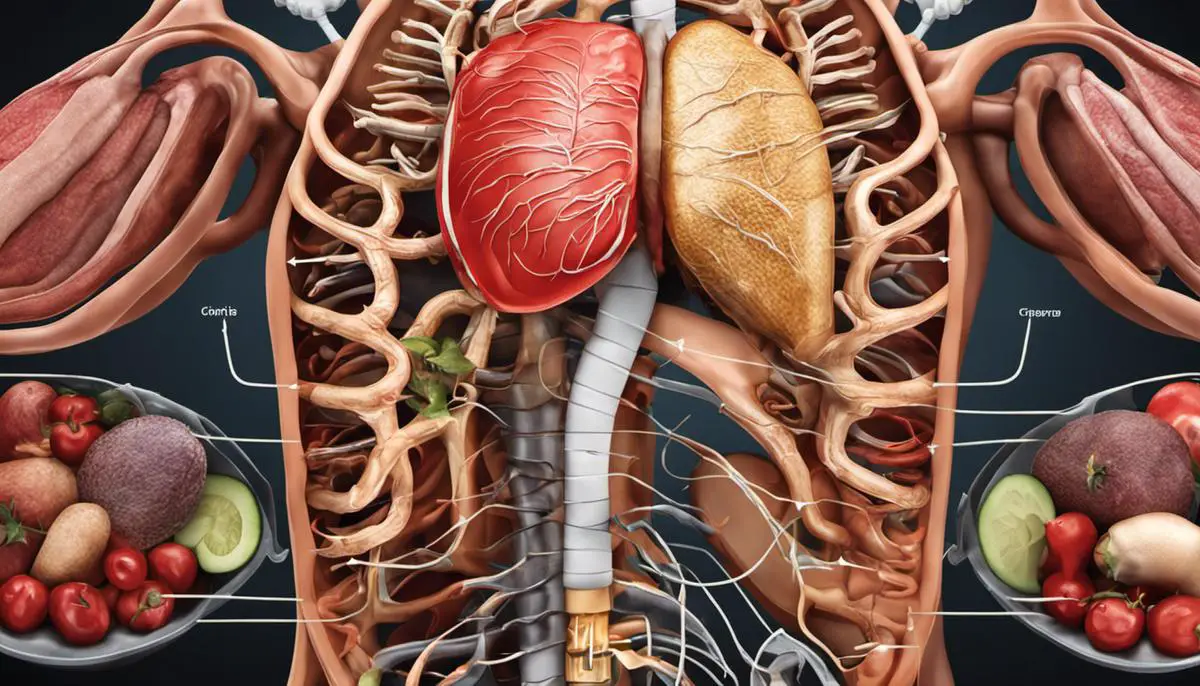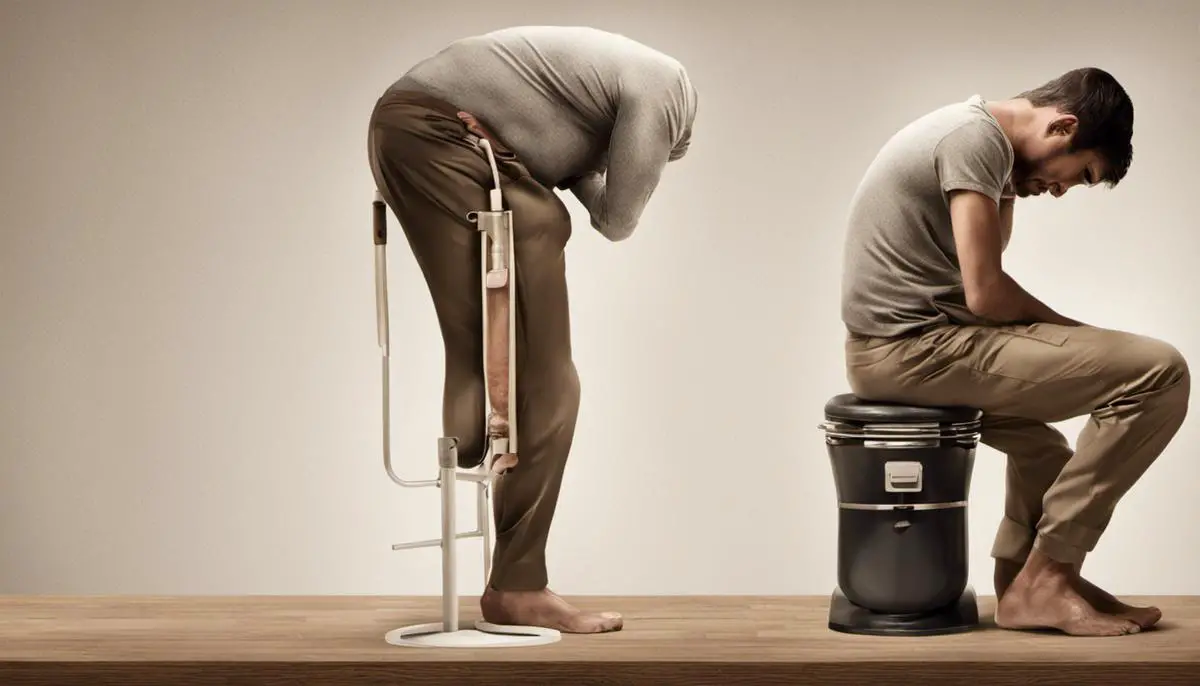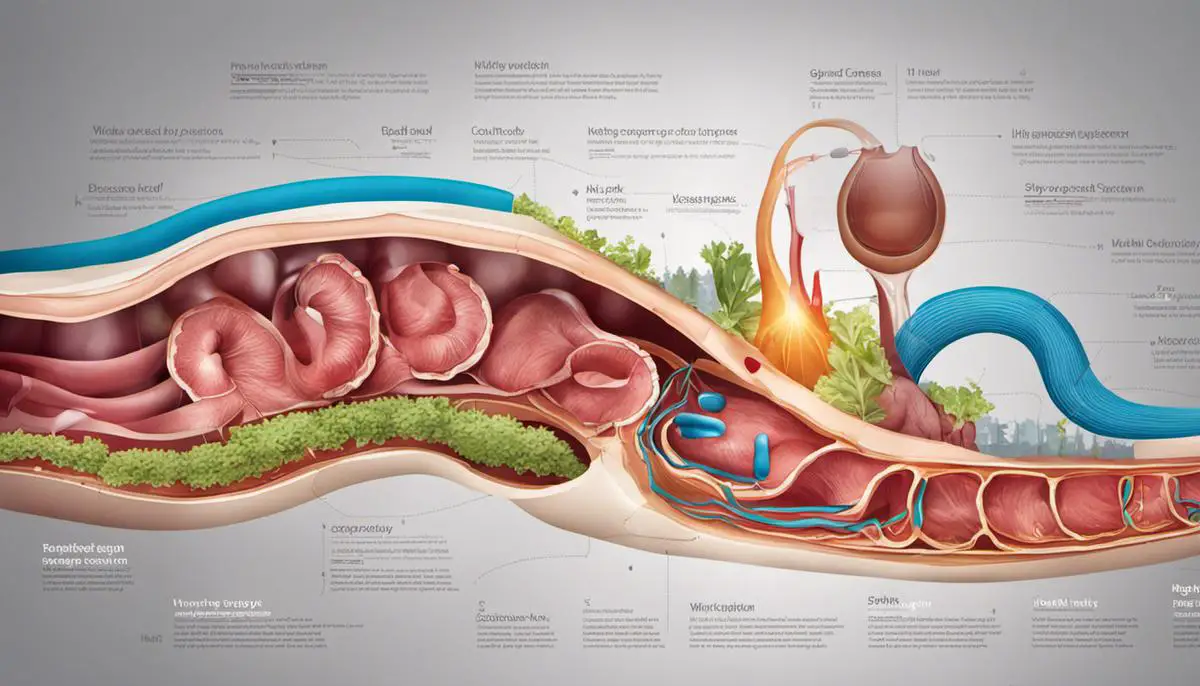Healthy digestion is essential not just for maintaining overall wellbeing, but also for ensuring our bodies function optimally every day. However, many of us grapple with digestion-related issues, one of the most common being constipation. This discomfort can significantly impact your quality of life, making it imperative to understand and address the causes. This task can become simpler by acquiring a basic understanding of digestive physiology and recognizing the importance of physical activities in promoting regular bowel movements. Additionally, it is crucial to be able to identify the symptoms of constipation, to differentiate it from common digestive discomfort, for effective management and prevention. Simple, yet effective exercises can prove to be powerful tools in this struggle, offering relief from constipation and improving overall digestive health.
Understanding Digestive Physiology
Understanding Digestive Physiology
The human digestive system is a complex and integral part of the body’s overall health. Beginning at the mouth and extending through the esophagus, stomach, small intestine, large intestine, and finally the rectum and anus, the digestive system’s primary role is to break down food and extract necessary nutrients.
This process starts with mechanical digestion such as chewing, is further broken down by enzymatic action in the stomach and intestines, and finishes with absorption of nutrients in the small intestine, while waste is compacted in the large intestine and eliminated through the rectum.
Adequate movement of these digested food particles through the digestive tract – known as peristalsis – is essential to prevent constipation. Without sufficient peristalsis, waste materials move slowly or not at all, leading to hardened stools that are difficult to pass, resulting in constipation.
The Importance of Physical Activity to Digestion
Physical activity has been found to have a direct impact on your digestion. When you engage in physical exercises, your body’s metabolic rate increases. This increase helps to speed up the digestion process, thereby preventing the slowing and hardening of stool that can cause constipation.
Exercise also stimulates muscle contractions within the GI tract, promoting more efficient movement of stool. This is especially true for activities that engage the large muscles groups of the body or the core muscles around the abdomen and back.
Recommended Exercises for Constipation Relief
- Aerobic Activities: Any form of aerobic activity, such as walking, running, biking, or swimming, can stimulate the digestive organs due to the vigorous movement and increased heart rate associated with these types of exercises.
- Core Strengthening: Exercises that strengthen the abdominal and lower back muscles, such as yoga, pilates or targeted workout routines, have been shown to facilitate bowel movement by increasing the efficiency and strength of abdominal contractions.
- Twisting Motions: Certain exercises involving twisting motions, such as some yoga poses or dancing, have been reported to help relieve constipation. This may be due to the way these movements stimulate and “massage” the abdominal organs, encouraging the transit of waste materials.
- Pelvic Floor Exercises: Strengthening the pelvic floor muscles can also help combat constipation. Kegel exercises and squats are two effective exercises for improving the strength and function of the pelvic floor.
Remember, everybody is different. What works best for one person may not work as well for another. It may be beneficial to try a variety of exercises and monitor your body’s response to find what works best for you. Also, it’s crucial to gradually increase the intensity of your workouts, especially if you’re new to exercising.

Recognizing Symptoms of Constipation
Recognizing Symptoms of Constipation
Crucial to alleviating constipation is the ability to recognize its hallmark symptoms. These often include fewer than three bowel movements a week, hard or dry stools, straining to have a bowel movement, feeling as if you can’t fully empty your bowels, or experiencing a sense of blockage. You might also feel bloated or have discomfort in your abdomen. Predominantly, individuals with constipation will experience stools that are hard, lumpy, or larger than usual.
Differentiating Constipation from Common Digestive Discomfort
While discomfort, bloating, and infrequent bowel movements can point toward constipation, these symptoms can also be signs of general digestive discomfort. Digestive discomfort generally encompasses varying conditions affecting the gastrointestinal (GI) system, such as heartburn, indigestion, and irritable bowel syndrome (IBS). Understand that these conditions often have overlapping symptoms with constipation, but may require different management approaches. Therefore, distinguishing constipation from other digestive issues is paramount, as it directly influences the type of treatments and exercises you will have to incorporate.
Understanding Causes of Constipation
Understanding the causes of constipation will lead you to the most suitable types of exercises for relief. Constipation can often be lifestyle-induced, resulting from a diet low in fiber and inadequate hydration level, coupled with insufficient physical activity. Medically, it can occur due to intestinal disorders, neurological conditions, hormonal imbalances, or be a side effect of certain medications or supplements.
Assessing Effectiveness of Constipation Relief Exercises
To comprehend whether your constipation relief exercises are working, you need to monitor your symptoms regularly and observe any changes in your bowel movement patterns. Improvement would translate into more frequent and less painful bowel movements, softer and regular-shaped stool, and a decrease in bloating or digestive discomfort. An increased sense of well-being could also indicate physical activities are positively affecting your constipation condition.
Bear in mind that seeing results from exercises can take time, and improvements may be gradual. Therefore, regular monitoring over time can give a more accurate assessment of their effectiveness. If exercise does not alleviate constipation or if symptoms worsen, seek medical advice to assess other possible causes or appropriate treatment approaches.

Learning and Performing Exercises
Understanding Constipation and Exercise
Constipation is a common digestive issue where you may have fewer bowel movements. The condition often causes discomfort or pain. Physical exercises can aid in relieving constipation as they help improve the overall body function, including digestion. Incorporating these exercises into your daily routine can significantly aid in improving digestion and relieve constipation.
Yoga Poses for Constipation Relief
Yoga is a great way to improve digestion and boost bowel function. One specific yoga position perfect for relief is the ‘Wind-Relieving Pose’. This pose is done by lying on your back, bringing your knees to your chest, wrapping arms around them and gently rocking side to side. Do this for one minute.
Another yoga position is the ‘Child’s Pose’. To perform this, kneel on your yoga mat and sit on your heels. Bend your torso forward and stretch your arms all the way out in front of you. Your forehead should be on the floor. Hold this pose for five minutes.
Walking to Boost Digestive Health
Walking is a simple, low-impact exercise which is highly effective in relieving constipation. It aids in speeding up digestion by encouraging food to move through the system.
For best results, consider walking for at least 15-30 minutes a day at a moderate pace.
Pelvic Floor Exercises
Pelvic floor exercises, also known as Kegel exercises, can be effective in reducing constipation. They strengthen the muscles that surround the intestines and rectum, improving bowel movement.
Here’s how to perform the exercise:
- Sit comfortably with your knees slightly apart.
- Imagine you’re trying to stop passing wind or hold the flow of urine.
- Squeeze and lift the muscles as if you’re doing this. Try to hold the squeeze for 8-10 seconds, then relax.
- Repeat the exercise ten times.
Seated Edgerton Exercise
This exercise is great for relieving constipation and involves activating your abdominal muscles while seated.
To perform it:
- Sit straight up in a chair.
- Inhale and lengthen your spine.
- As you exhale, lean your body forward from your hips, keep your spine straight.
- Continue leaning forward until you feel a slight discomfort in your abs.
- Hold for a moment, then return to the upright position.
Doing this exercise once or twice daily can have a positive effect on digestion and help prevent constipation.
Frequency and Intensity for Optimal Results
All these exercises should be performed on a daily basis for optimal results. You can adjust the intensity depending on your comfort level. Remember, the goal is to boost digestion and relieve constipation, so there’s no need to push yourself too hard. Practice these exercises consistently and over time, you should see improvement in your bowel regularity.

Ultimately, managing constipation is not about temporary relief, but about sustainable lifestyle changes that include regular physical activity, conscious eating, and staying hydrated. Understanding the underpinnings of digestive physiology offers valuable insights into the role of exercises in promoting regular bowel movements. Knowing how to recognize the symptoms of constipation can equip you with the skills to assess the efficacy of your efforts in managing the condition. The journey may involve learning new exercises, adjusting their frequency and intensity, but the resultant relief and improvement in your digestion and overall wellbeing are worth it. Continue to apply this knowledge and engage in these beneficial practices, and you’ll be well on your way to boosting your gastrointestinal health and alleviating the discomfort of constipation.
